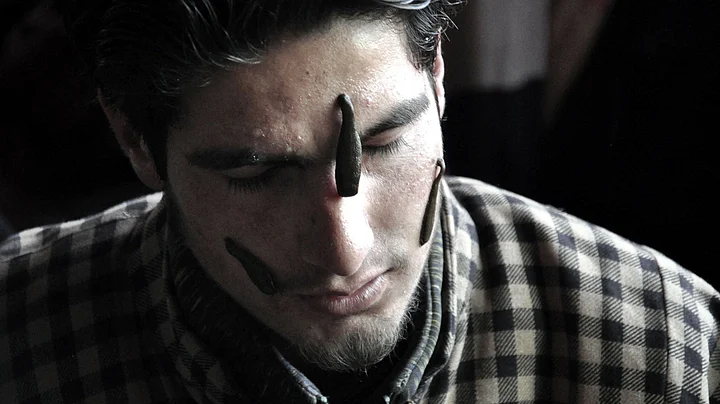The beginning of the Persian calendar on Navroz marks the first day of spring in Kashmir. Despite the leaps made by science and technology in recent years, many people in Jammu & Kashmir still believe that ‘leech therapy’ is the best remedy for various diseases.
Besides planting new tree saplings to welcome spring, people throng the practitioners of ‘leech therapy’. It is believed that ‘leech therapy’ is more effective on the days of Navroz than on other days.
The Kashmiris believe this will heal them of pain, cure nervous system abnormalities, dental problems, skin diseases, infections, arthritis, chronic headaches and sinusitis. During ‘leech therapy’, three to four leeches are placed on the body of a patient for half an hour, for bloodletting. This (bloodletting for healing) is also called therapeutic phlebotomy.
Leeches are believed to be effective in increasing blood circulation and breaking up blood clots. They are also believed to treat circulatory disorders and cardiovascular diseases.
The European medicinal leech, Hirudo Medicinalis, is one of the several species of leeches used for medicinal therapy. “I have been in this trade since the last 45 years and I believe, ‘leech therapy’ is more effective on Navroz day, said Ghulam Hassan Hajam , resident of Siligam, Anantnag ”. “The results are encouraging. We are getting patients even from other parts of Kashmir,” he added .
The particular species of leech used is brought from Uttar Pradesh to Kashmir, and it costs a patient Rs 50 per leech session. Many people consider ‘leech therapy’ an alternative to pharmacological treatments. Leeches were even known to treat various ailments in ancient Egypt.
A medicinal leech, which has three jaws with tiny rows of teeth, pierces a person’s skin with their teeth, and inserts anticoagulants through their saliva. The leeches are then allowed to extract blood, for 20 to 45 minutes at a time, from the patient. This equates to a relatively small amount of blood, up to 15 ml per leech.
“For centuries, people have used leeches to cure everything from headaches to gangrene. It is a legitimate treatment that can help heal skin grafts and restore blood circulation,” he added.
Though leeches are mostly used in plastic surgery and other microsurgery in many parts of the world, but in the Kashmir Valley, “leech therapy has proved effective on patients, as leeches secrete peptides and proteins that work to prevent blood clots,” says Shadi Lal, a Unani practitioner. “When you apply a leech on a patient, the secretions or anticoagulants keep the blood flowing on wounds, thus helping in the healing process,” he continued.
According to Ghulam Hassan, there are more than 100 bio-active substances in the saliva of a leech which go into the body of a patient while it sucks the patient's blood. Once a leech is used on a human, it is then killed as part of the measures to prevent it from passing on infections.
Iftikhar Dar, a patient, said of his experience, “I used to feel suffocated whenever I had a cough as I am an asthma patient. In the past five years, I have been coming to this hospital whenever I face an asthma attack. Within half an hour of leech therapy, I feel relieved. Today also, I have come here for leech therapy on the occasion of Navroz.”
(Aasif Shafi is a Kashmir-based journalist. The views expressed in this piece are the author’s own. The Quint neither endorses nor is responsible for them.)
(At The Quint, we question everything. Play an active role in shaping our journalism by becoming a member today.)
